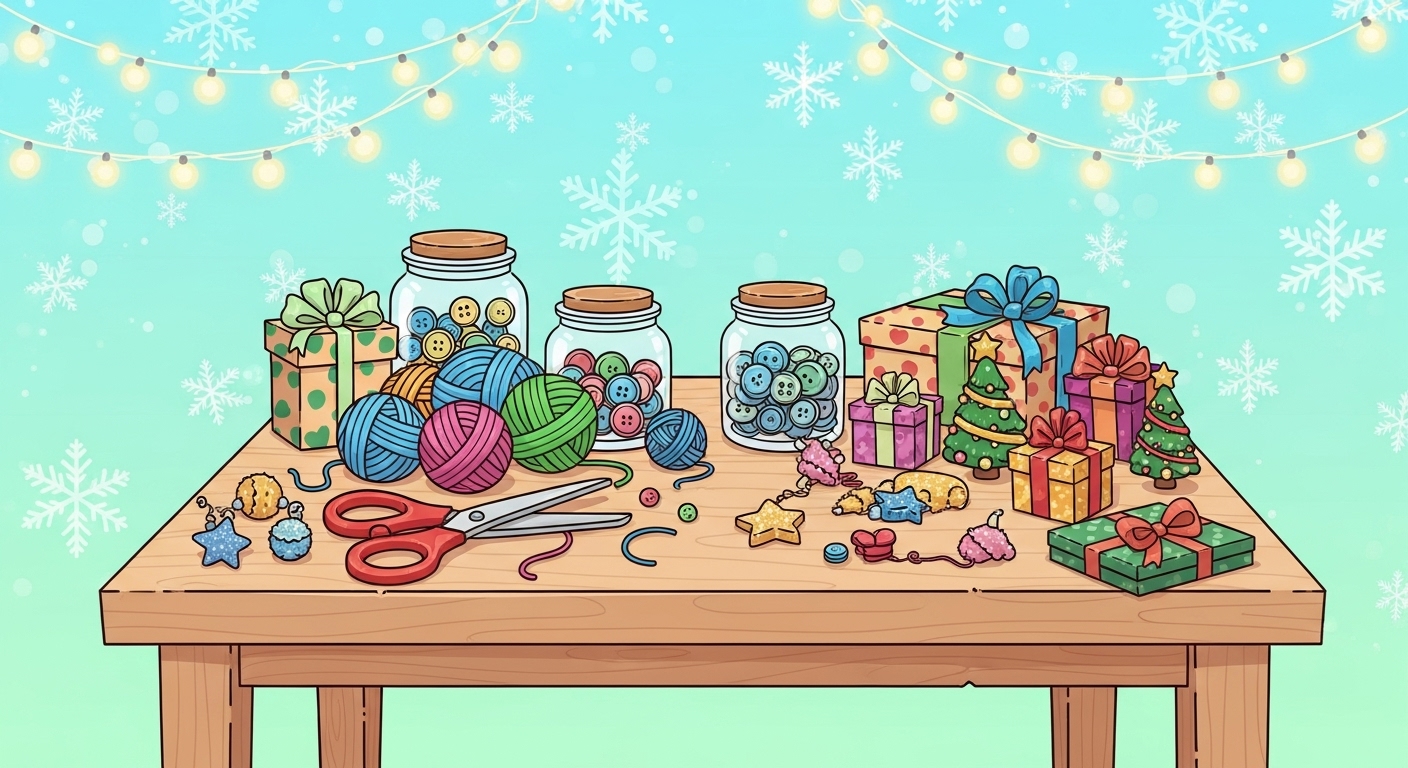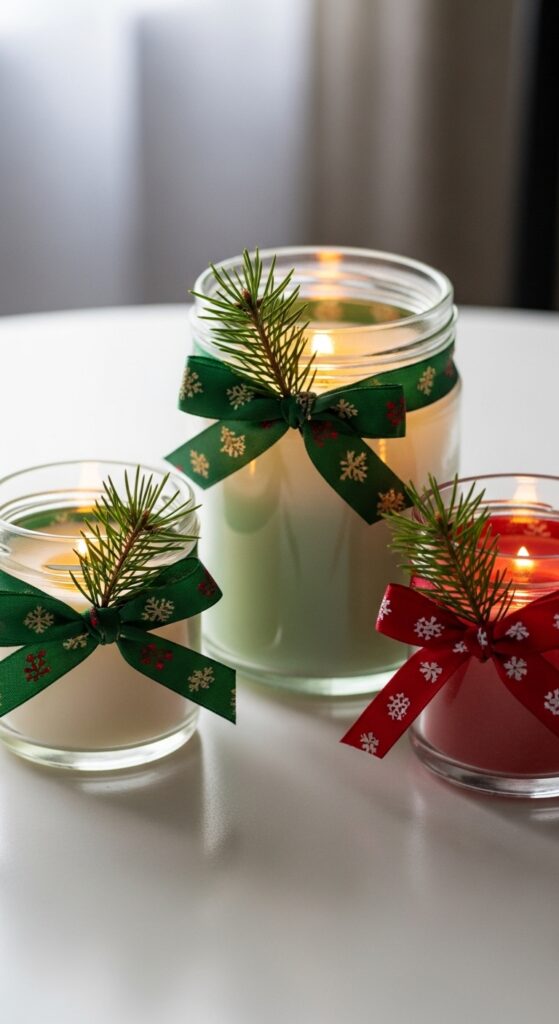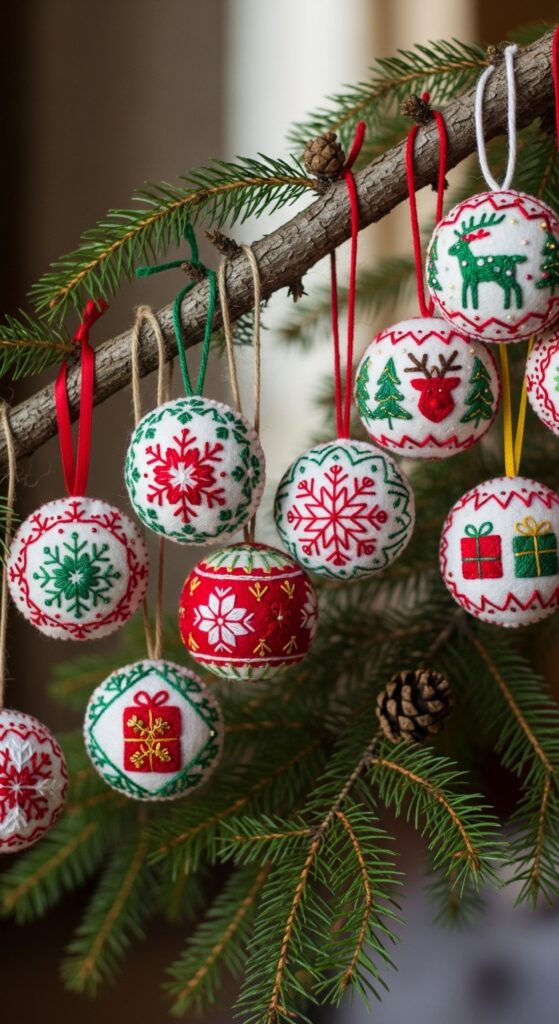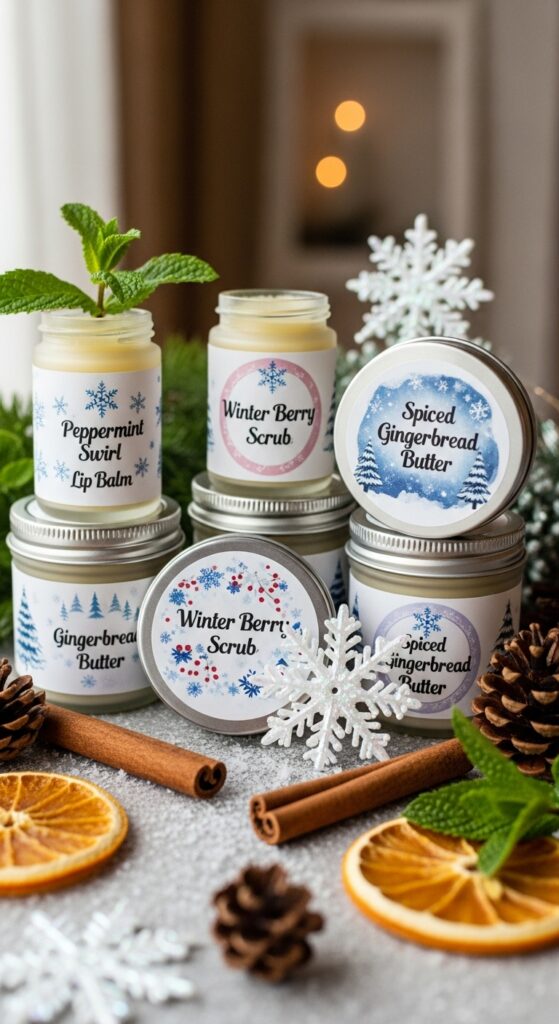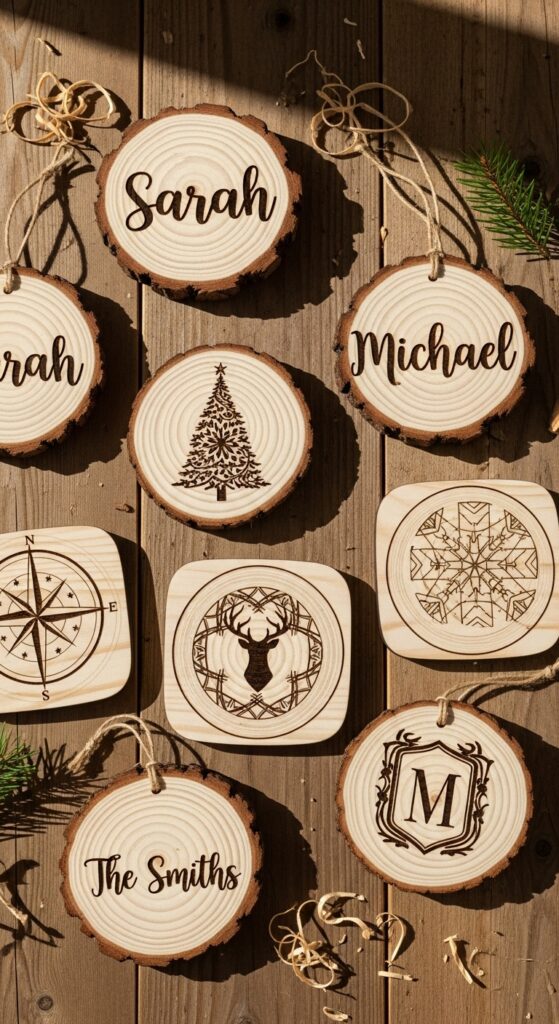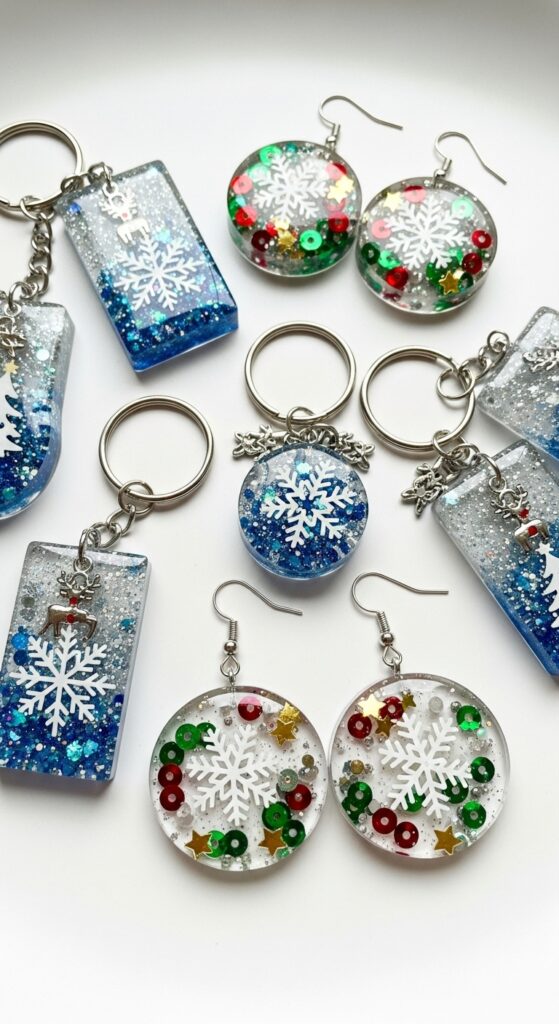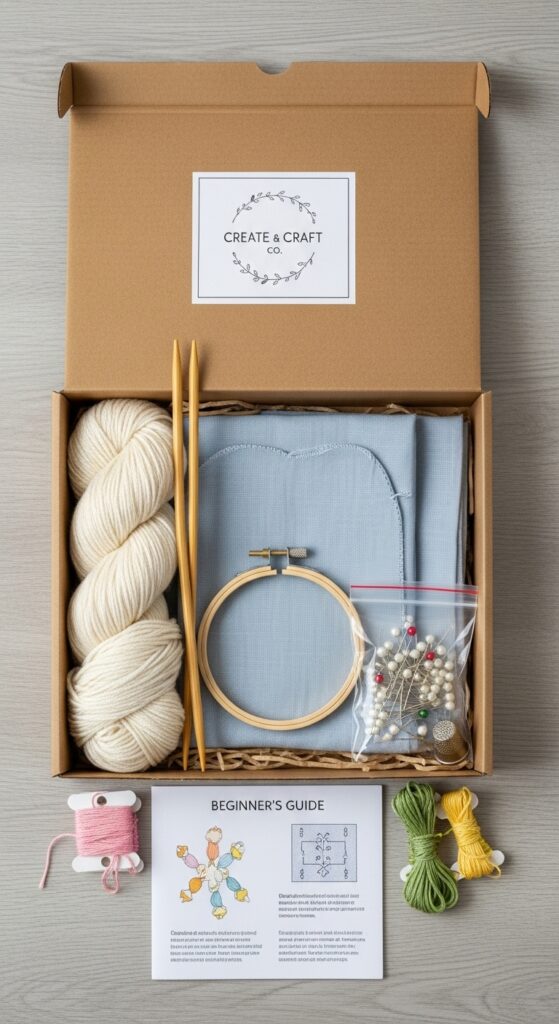When the holiday season rolls around, handmade gifts have a special charm. But what if you could turn that charm into income? Over years of crafting and selling, the author has tried many gift ideas, learned from mistakes, and refined what works. Below are seven DIY Christmas gift ideas that sell well — with tips, cautions, and real-experience notes to guide you.
1. Handcrafted Soy Candles in Decorative Jars
Why it sells well: Candles are a classic. They fit almost any gift budget, are easy to ship (relatively small and lightweight), and people love seasonal scents (e.g. pine, cinnamon, vanilla).
What to do:
- Choose quality soy wax or a soy–paraffin blend.
- Use essential oils or fragrance oils.
- Package in pretty glass jars (clear or colored) with lids.
- Add holiday-themed labels or tags.
Pro tip from experience: The author once sent candles in thin glass jars and a few cracked in transit. Upgrading to thicker jars plus a layer of bubble wrap reduced breakage dramatically.
How to scale: Make small batches first to test which scents are popular. Don’t invest in a huge wax melting pot until you’re confident in demand.
Caution: Be sure to label “burn within sight” and safety instructions. Always test burning time and wick size.
2. Personalized Embroidered Ornaments
Why it sells well: These are sentimental, lightweight, and often impulse-buys. People enjoy adding names, years, or short phrases.
What to do:
- Use felt, cotton, or linen pieces.
- Hand-stitch or use an embroidery machine.
- Back them with firm backing so stitches aren’t visible.
- Add a ribbon or loop for hanging.
First-hand note: The author tried freehand stitching for a craft fair once — many buyers asked, “Can you put the name in cursive or a special font?” So now, templates or digitized fonts help produce more consistent, faster results.
Scaling tip: Use a simple machine-based embroidery setup for repeated designs. But for a higher price point, hand-stitched uniqueness has value.
3. Holiday-Themed Lip Balm / Body Products
Why it sells well: Smaller, consumable gifts are ideal — people love trying something new, and they’re less risky to purchase.
What to do:
- Use a base of beeswax, shea butter, or coconut oil.
- Add flavoring or essential oil (mint, peppermint, citrus).
- Pour into small tins or tubes.
- Design festive labels (e.g. peppermint bark, gingerbread, cranberry).
Experience insight: One year the author made peppermint lip balm and used plain labels. It sold slowly. The next year, printed themed labels and marketed it as a “holiday special” — it sold out faster.
Regulation note: Be mindful of local cosmetic regulations (labeling ingredients, keeping small batch records). Always test for skin reactions.
4. DIY Craft Kits / “Make-It-Yourself” Gift Packs
Why it sells well: People love the idea of a kit — it’s both a gift and an activity. Especially for kids or crafty friends.
What to do:
- Bundle supplies (felt, beads, yarn, small tools) plus full instructions.
- Choose a theme: ornament making, simple sewing, mini wreath kits, etc.
- Pack in a sturdy box or reusable pouch.
Tool suggestion: The author uses a small heat-sealing machine to seal materials in little pouches. One such useful tool is the Impulser Heat Sealer (for craft kits and small bag packaging) (available on Amazon). It’s compact, reliable, and used for keeping small parts together neatly.
Another helpful product is a Portable LED Light Box / Tracing Pad, which helps when designing and planning kit layouts — the author uses one for sketching and aligning parts.
These serve to keep your kit presentation sharp and professional, which matters in sales.
Why these helped: In one season, a few buyers messaged saying, “Your kit is so neatly packaged — I loved opening it.” That kind of positive feedback drives repeat orders.
5. Custom Wood Slice Ornaments / Coasters
Why it sells well: They have rustic appeal, can be personalized, and feel premium. Because wood is sturdy, shipping is safer.
What to do:
- Use thin slices of wood (sanded, sealed).
- Wood burning (pyrography) or paint names, dates, simple designs.
- Apply varnish or food-safe sealant (if making coasters).
- Add felt pads on the bottom for coasters.
Personal tip: The author initially over-sanded slices and lost natural bark edges that buyers liked. Now, minimal sanding preserves rustic character.
Variation idea: You can offer sets — e.g. three coasters or one ornament + coaster combo.
6. Knitted / Crocheted Throws, Scarves, or Cozy Accessories
Why it sells well: Winter accessories are evergreen. A hand-knit scarf or throw looks and feels like love.
What to do:
- Use soft, washable yarn (acrylic blends or wool blends).
- Stick with patterns that allow you to maintain speed but quality.
- Offer customization (length, color scheme, initials woven in).
Experience insight: Initially, the author tried to make super intricate blanket patterns, but they took too long. Switching to wide-gauge chunky yarn with simpler patterns tripled output without sacrificing aesthetic.
Packaging tip: Fold attractively, wrap with a ribbon and include a small tag with care instructions.
7. Festive Resin Jewelry or Keychains
Why it sells well: Low material cost, high perceived value. Tiny items sell at good margins. The holiday twist (e.g. with glitters, miniature snowflakes, dried flower pieces) adds appeal.
What to do:
- Use jewelry-grade epoxy resin.
- Add small inclusions (glitter, tiny charms, dried bits).
- Use silicone molds.
- Add keychain rings or earring/backing hardware.
Quality reminder: The author once sold a batch where a few pieces yellowed. Always use UV-resistant resin and cure thoroughly under proper conditions.
Tip: Offer matching sets (earrings + keychain) or holiday-themed shapes (tree, snowflake, star).
🧠 How to Choose Which Projects to Sell (And Avoid Duds)
1. Evaluate your time vs. profit
Always track how long each item takes. If you make something that costs $5 in materials but takes 3 hours, you’re not earning much. A balanced project is one where your labor is sensible, and the material cost plus your time still yields a decent markup.
2. Start small & test
Make small batches (5–10 units) for markets or online tests. See what sells first. Use feedback to refine scents, colors, styles, or designs. Don’t overcommit to large inventory without validation.
3. Know your niche
Many adapters of craft businesses emphasize the importance of finding a niche — for example, “coastal-themed resin keychains” or “Scandinavian embroidered ornaments.” That positioning helps you stand out. The Recoverie+1
4. Great photos matter
Beautiful product photography is non-negotiable. Use plain backgrounds, good lighting, multiple angles. The author often shoots in natural daylight and uses a lightbox to maintain consistency. According to creators in the handmade world, “the photo is the first thing that captures the eye.” Create and Thrive
5. Price wisely
A common mistake is undervaluing your labor or forgetting overhead (packaging, shipping, tools). Use a formula:
Material cost + labor cost + overhead + profit margin = your selling price
Many makers then apply a factor or adjust for perceived value. The Recoverie
Also, don’t undervalue your work just to compete. Buyers often equate low price with low quality.
6. Choose selling platforms strategically
You don’t have to limit yourself to one. Some earners combine:
- Etsy — ideal for handmade items and has built-in traffic
- Amazon Handmade — reaches a vast audience but comes with fees and competition Sell on Amazon+1
- Craft fairs / local markets — good for seeing buyer reactions and generating sales immediately Instructables+1
- Your own website or Shopify store — gives you control and better margins long-term Shopify+1
Diversify so you’re not reliant on just one channel. Many successful makers use a “patchwork” income model (selling on Etsy, social media orders, craft fairs). Reddit+1
7. Customer service & brand trust
- Always respond promptly and politely.
- Use consistent branding (logo, packaging, thank-you note).
- Ask for reviews and display them.
- Use tracking for shipping and guarantee delivery.
- Be transparent about processing times, returns, and care instructions.
- Overdeliver when possible — small freebies or gift wrapping go a long way for repeat business.
These practices help build trust and authority over time.
✅ Final Tips for Launching Successfully
- Plan your timeline — You’ll need buffer time for production, photography, listing, and shipping.
- Bundle items or create “gift sets” — People are more likely to buy 2–3 items if you package them together at a slightly better deal.
- Promote early — Use social media, email lists, local groups, and sneak peeks to build anticipation.
- Iterate and learn — Watch what sells fast, ask buyers what they want, refine designs.
- Keep quality high — It’s better to have fewer perfect items than many mediocre ones.

